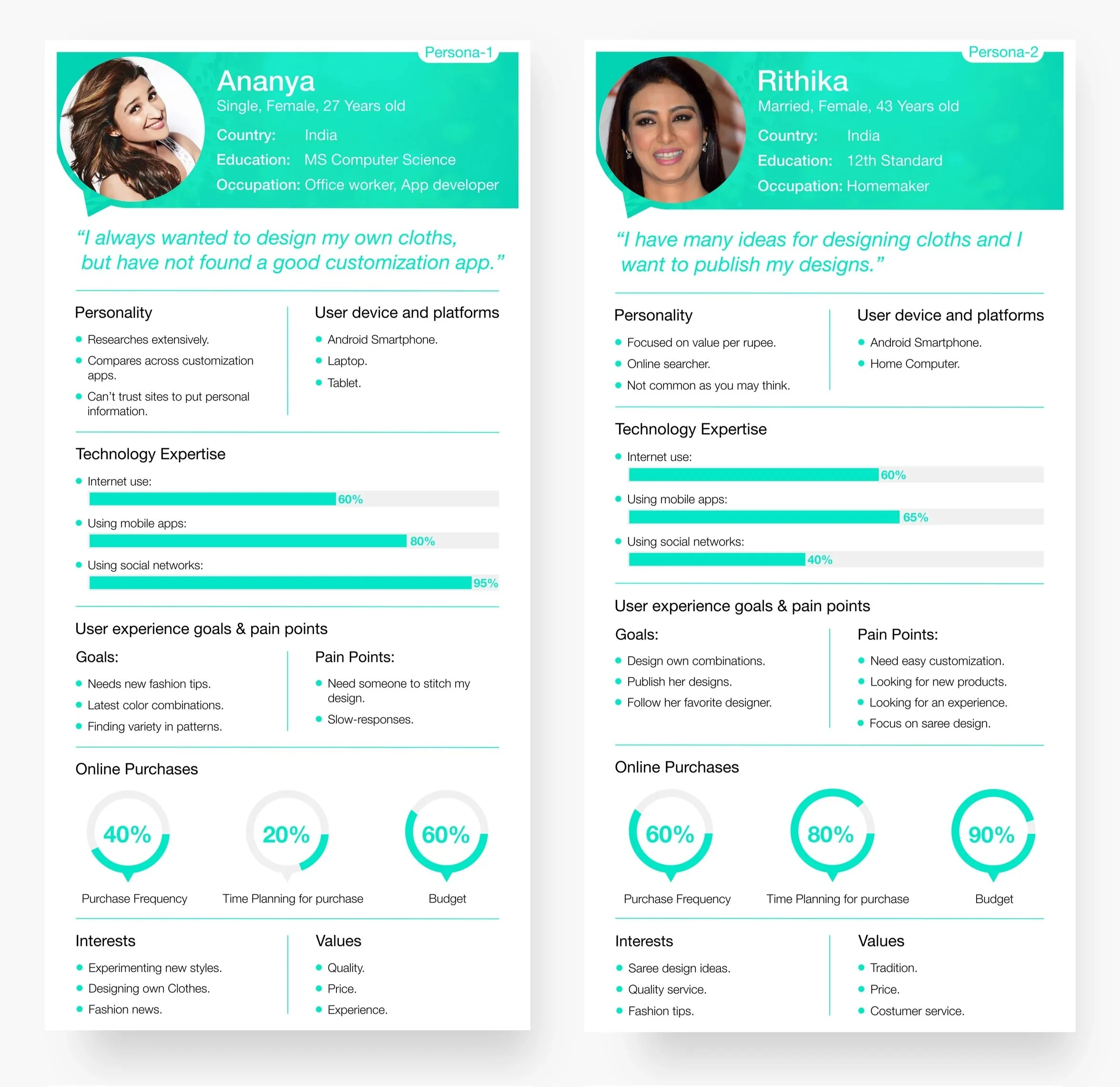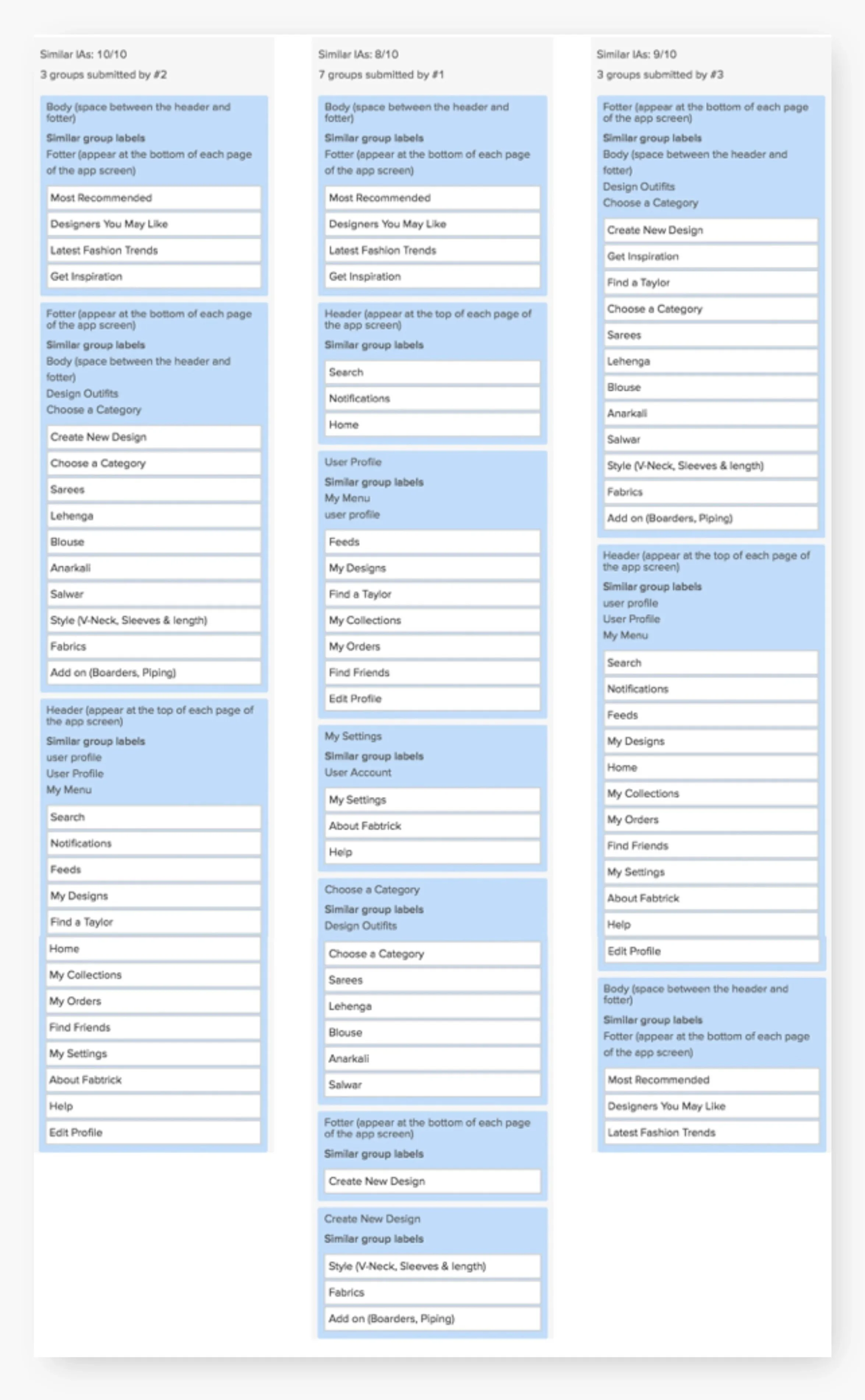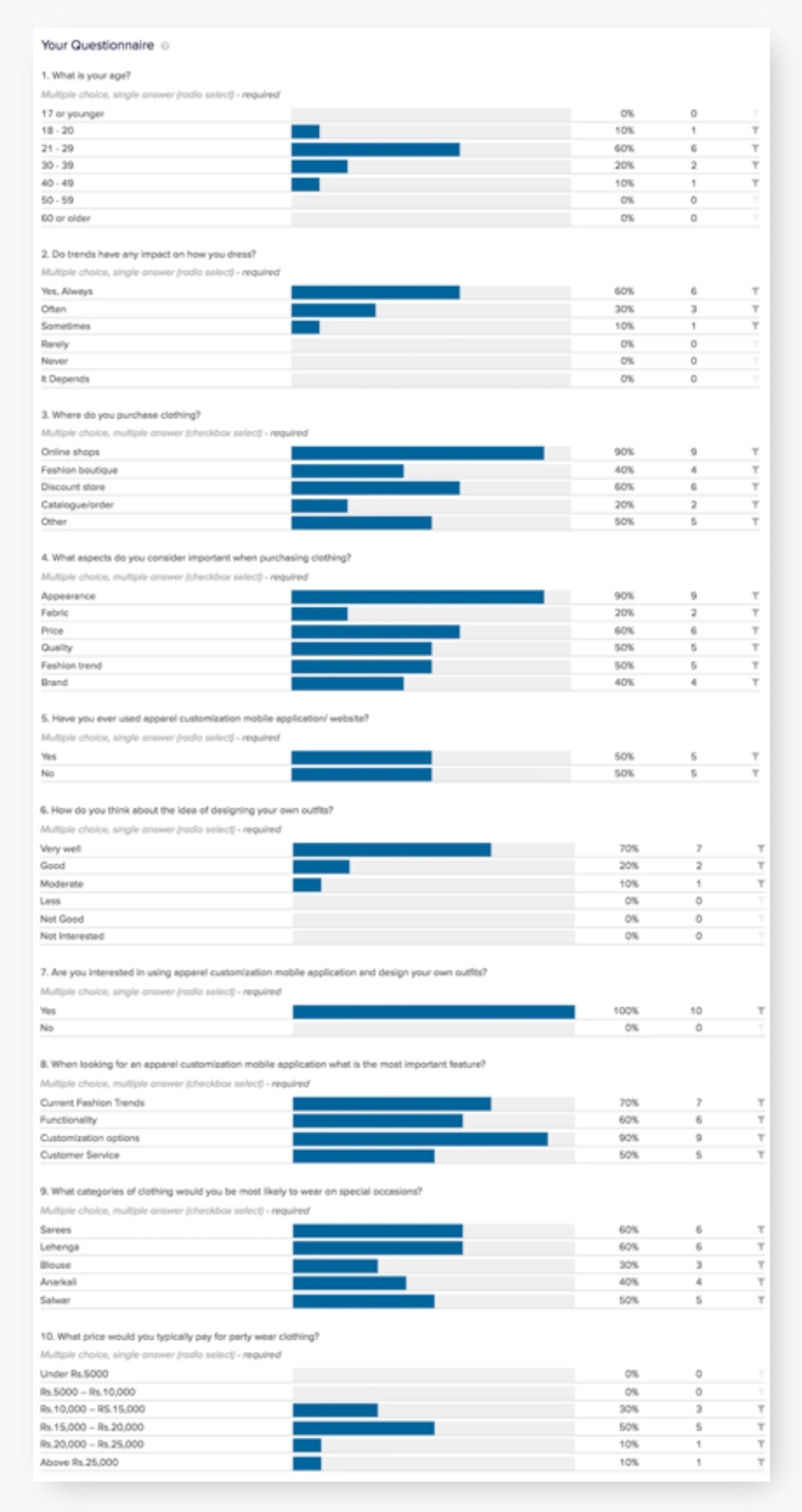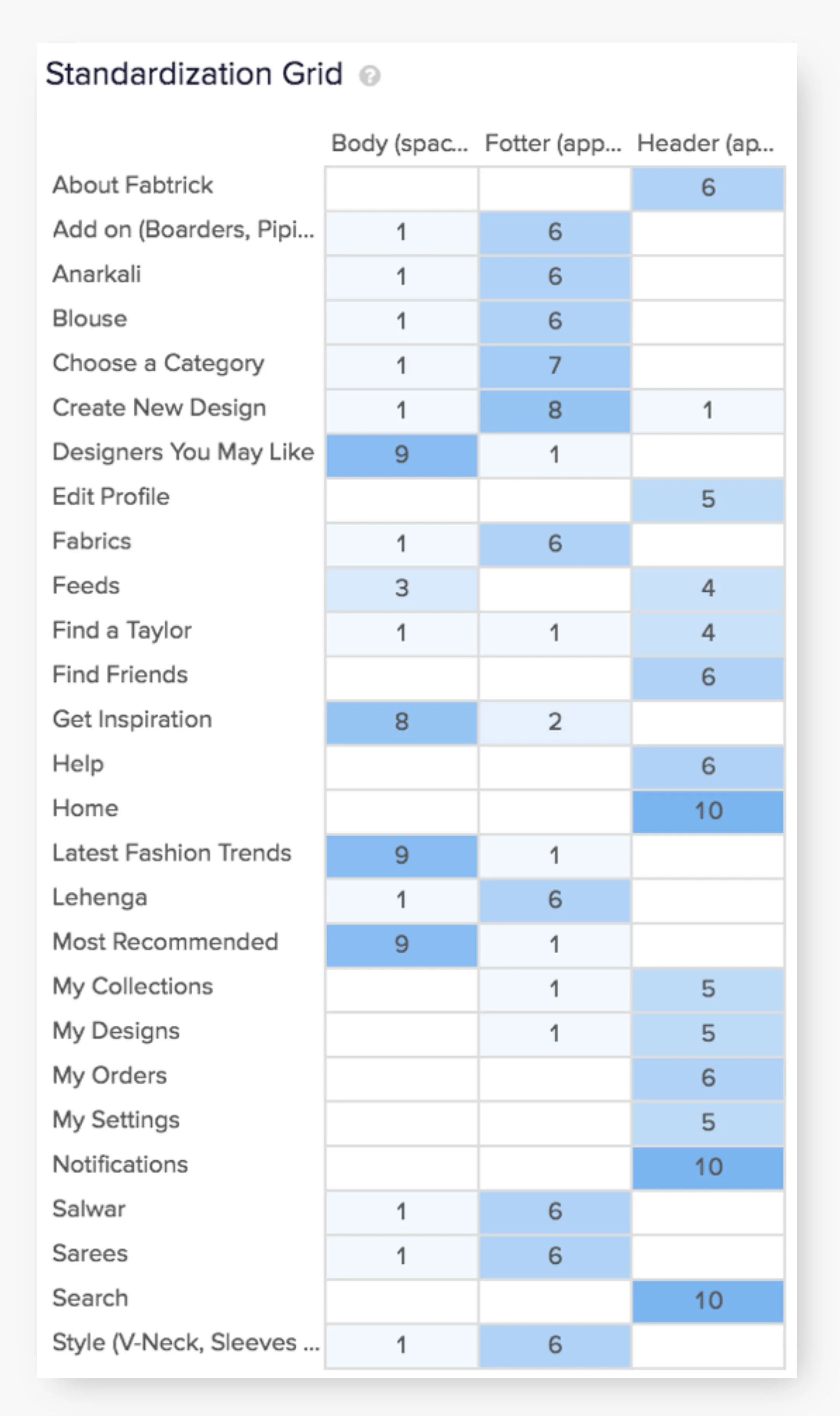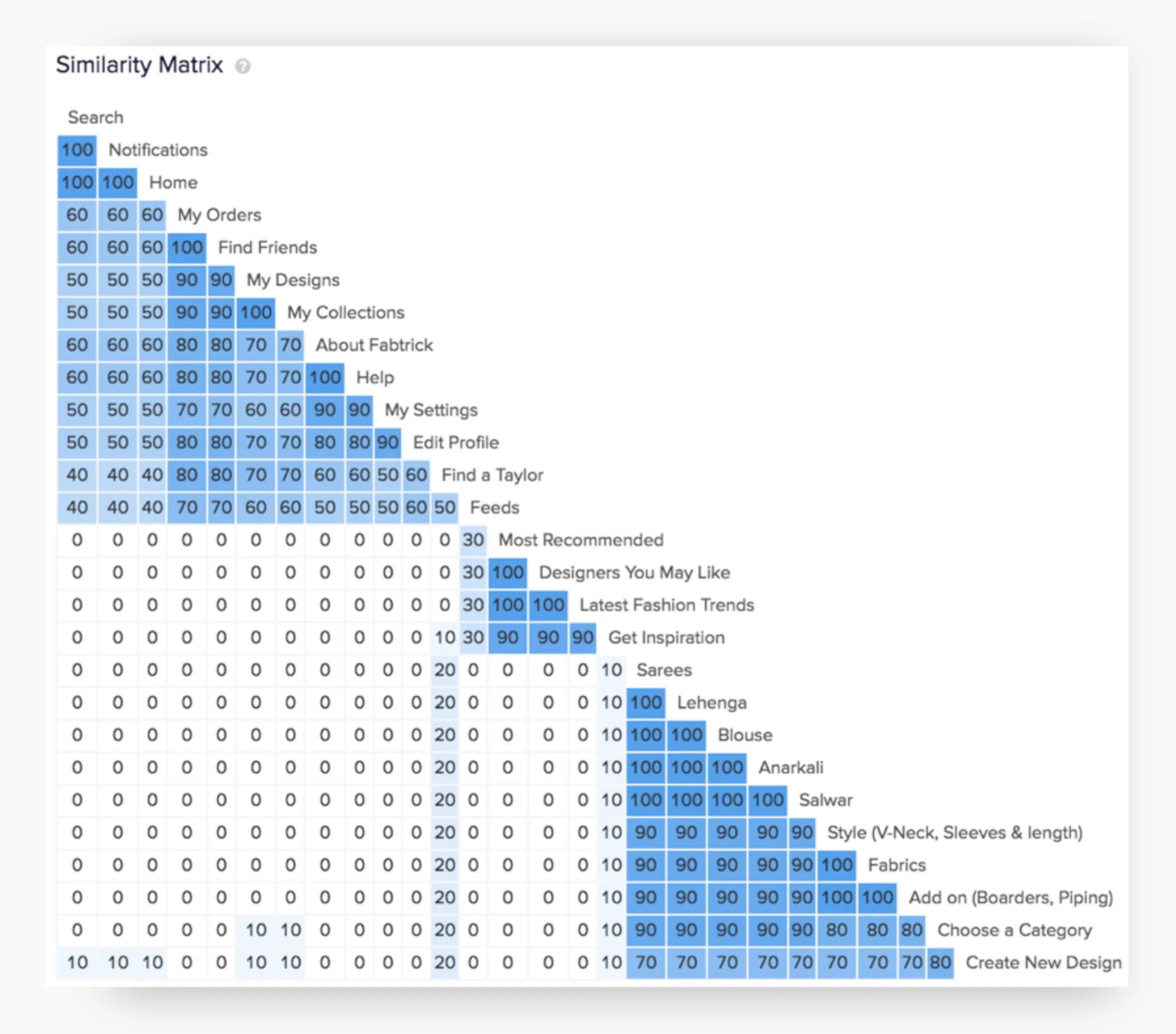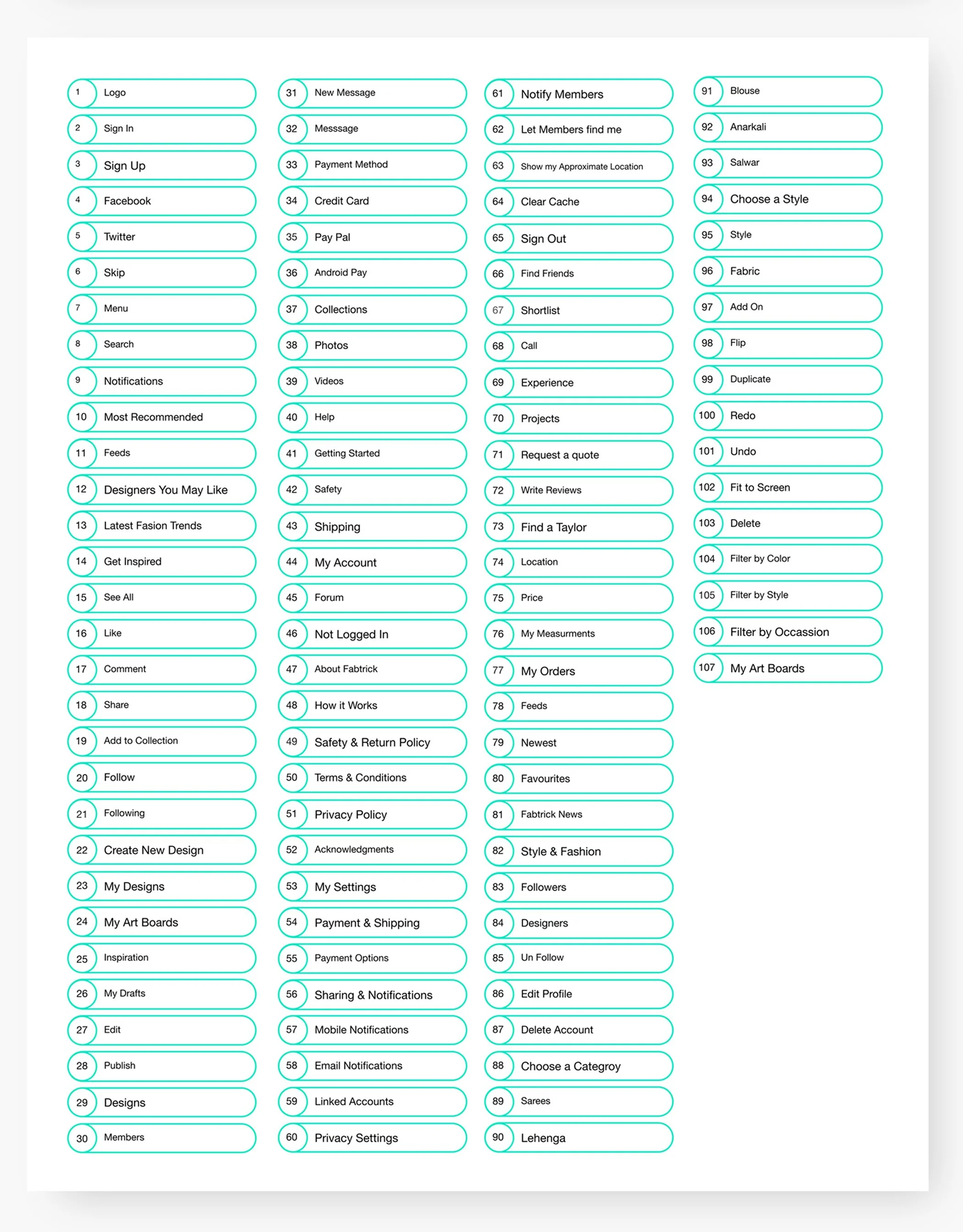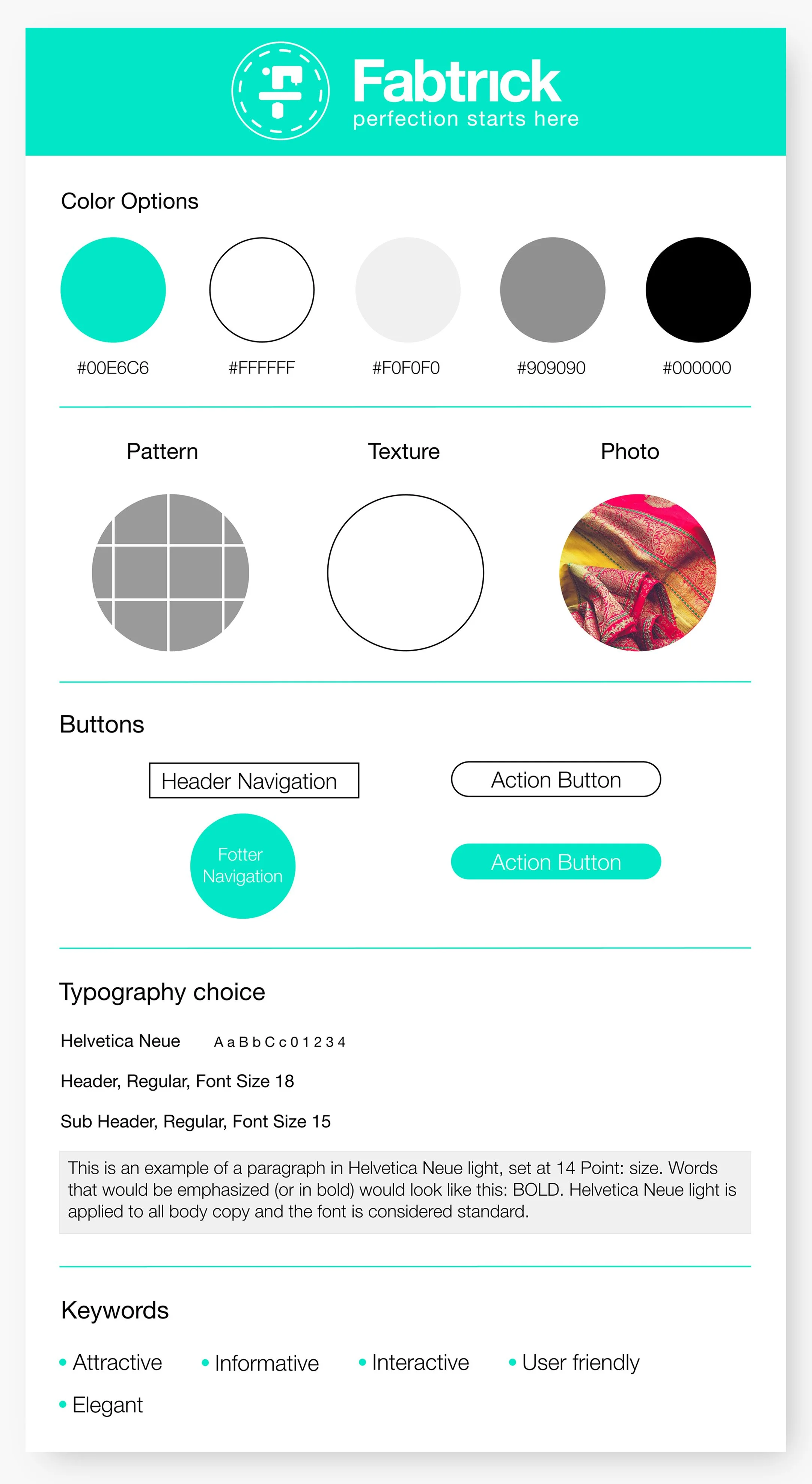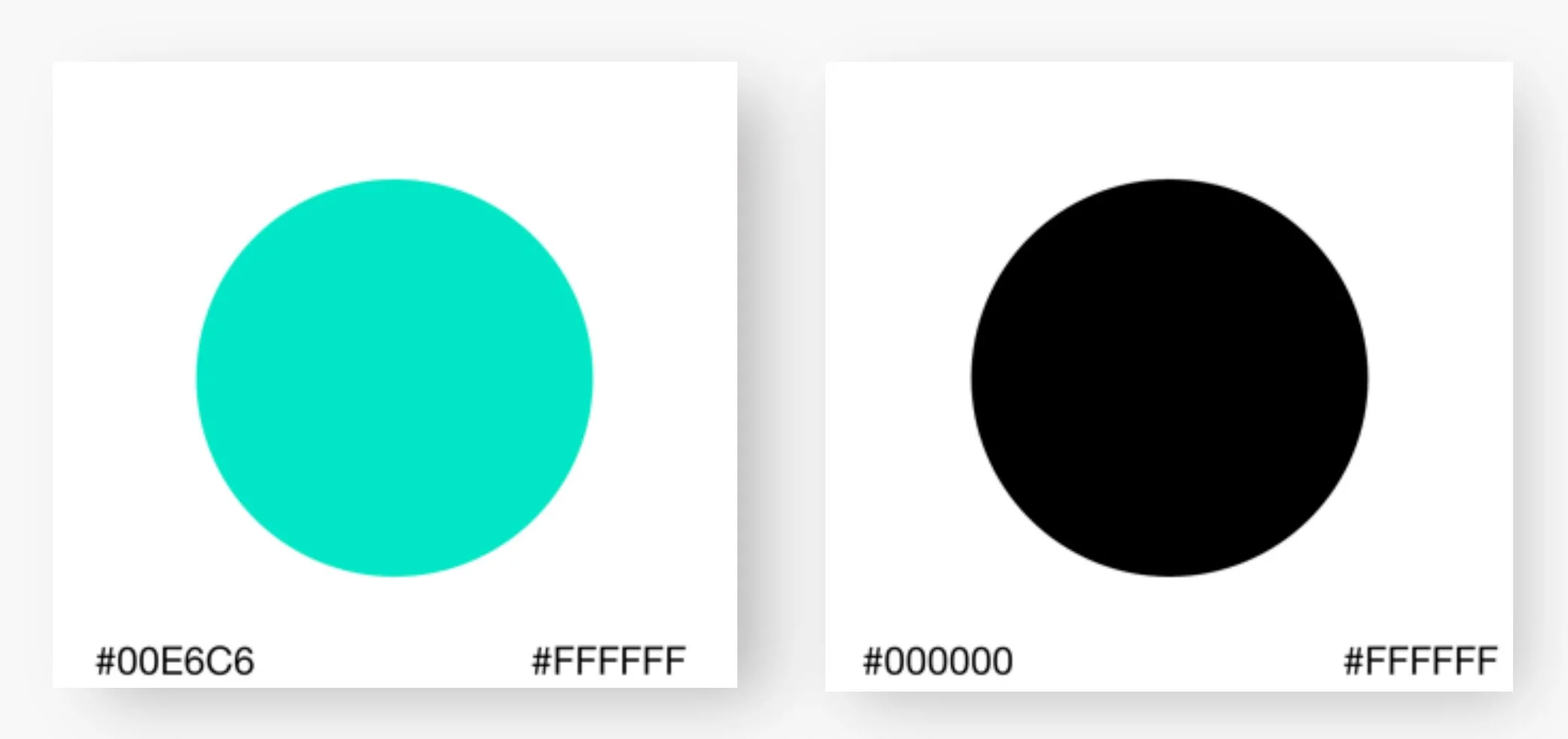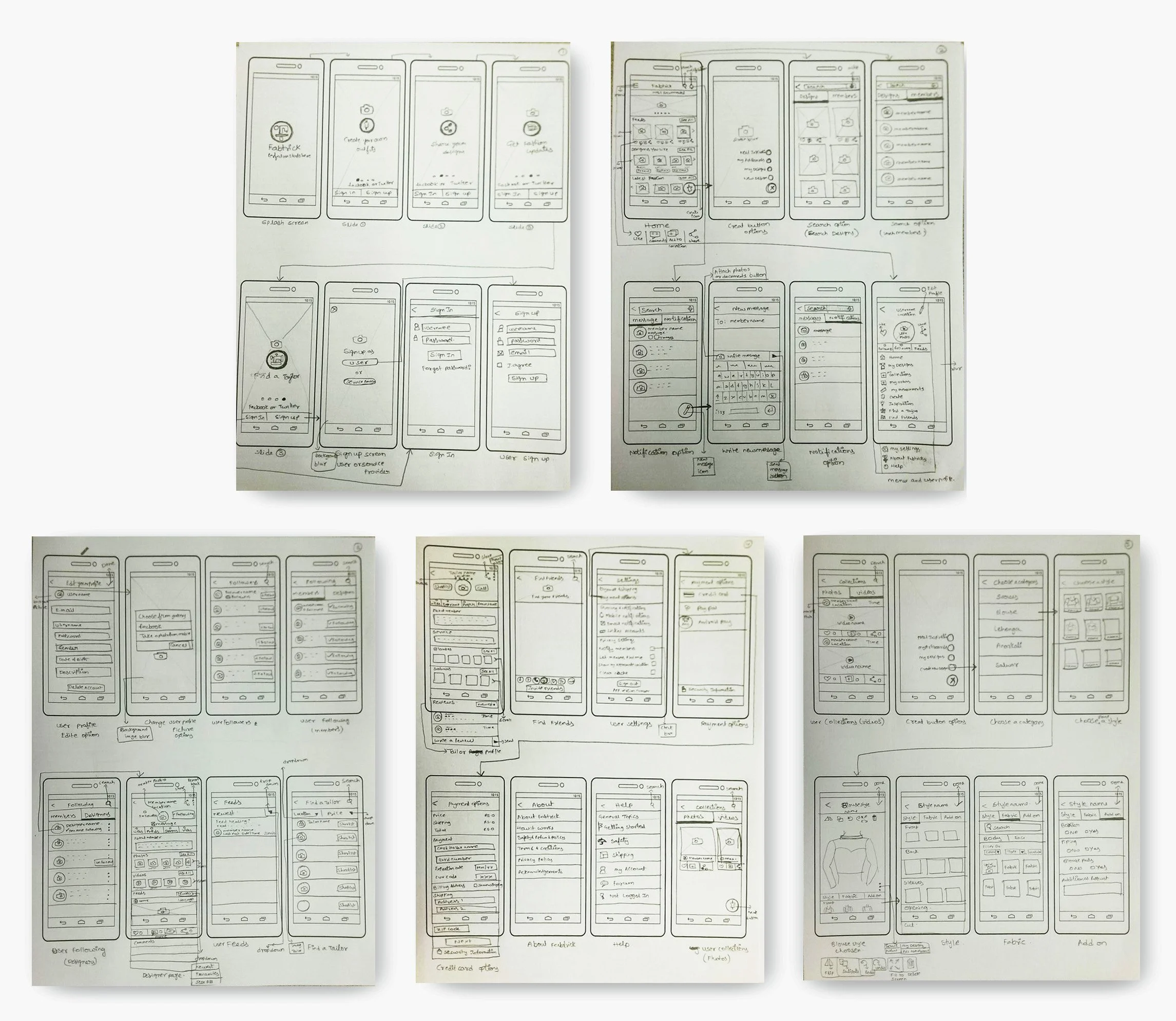
Where tradition meets personal expression
Android App | Solo Project | UI/UX + Brand Identity
Overview
Fabtrick is an Android mobile application concept that celebrates Indian ethnic wear through personalization. Designed entirely by me, it empowers users to become their own fashion designers experimenting with fabrics, patterns, textures, and colors to create apparel that reflects their unique style. This project explores the intersection of cultural aesthetics, creativity, and technology, making fashion more personal, inclusive, and emotionally engaging.
Project type:
End-to-end app + branding
Role:
Sole UX/UI designer + brand designer
Tools:
Adobe XD, Invision
The Challenge
Fashion lovers often face limited ready-made options or high costs when working with professional designers. My challenge was to create a cost-effective, intuitive platform that gives users the tools and confidence to design their own clothes no designer required.
Key challenges included:
Designing for users with varying levels of fashion knowledge
Balancing customization freedom with simplicity and usability
Ensuring an emotionally engaging, culturally relevant experience
User Research & Insights
User Personas
I created four distinct personas, reflecting diverse behaviors, motivations, and lifestyles around mobile clothing customization. Each persona included professional background, personality traits, and design preferences. This process helped me:
Visualize realistic user journeys
Identify potential pain points and opportunities
Align app navigation and feature sets with actual user needs
Survey Results
A survey of women aged 18–49 via Optimal Workshop captured preferences and behaviors. Insights informed feature prioritization, interface hierarchy, and content strategy, ensuring that the app addresses real user expectations.
Participatory IA
Through card sorting, I analyzed how participants naturally grouped content. This highlighted areas of strong consensus, forming the foundation for the navigation structure.
Ideation & Design
Content Card Sort
Initially, users struggled with 107 content cards, so I refined the set to 27 essential cards. This generated clear, actionable data for information architecture and navigation design, ensuring the app is intuitive and easy to navigate.
Final Navigation Site map
The finalized sitemap reflects how users naturally categorize content, providing a seamless structure for exploring fabrics, patterns, and personalization options.
User Needs
-
“I’ve always wanted to design my own clothes, but I haven’t found a good customization app.”
-
“I have many design ideas and want a platform to publish and share my creations.”
-
“I have many design ideas and want a platform to publish and share my creations.”
-
“I have plenty of free time, so I’d love regular updates on new fashion trends.”
Color & Visual Research
Color selection played a critical role:
Turquoise Blue (#00FFEF) was chosen for its feminine, calming, and refreshing qualities
Complemented imagery without overpowering product visuals
Reinforced the app’s brand identity while enhancing usability and visual hierarchy
Style Tile & Typography
Helvetica Neue for headings, subheadings, and body text, ensuring clarity and modern aesthetics
Style tile defined look, feel, and emotional tone, creating a cohesive visual language across screens
Sketches & Early Concepts
Paper sketches captured initial interface ideas and flows, allowing rapid iteration of layouts and user journeys. Sketching early helped identify potential usability issues before moving into digital tools.
Prototyping & Testing
High-Fidelity Prototype
Developed in Adobe XD, enhanced with InVision for realistic interactivity. These prototypes:
Simulated real-world user interactions
Tested workflows, customization flows, and navigation patterns
Allowed rapid iteration before development
Usability Testing & Iteration
Users performed task-based testing, highlighting friction points and areas of confusion. Key outcomes included:
Redesign of navigation flow for easier discovery of customization options
Refinement of interaction patterns for selecting fabrics, colors, and patterns
Validation of a personalized yet simple experience for diverse user types
Outcome & Highlights
Fabtrick stands out because it combines cultural relevance, personalization, and thoughtful UX methodology. Key highlights:
End-to-end UX ownership: Research → Personas → Card Sort → Wireframes → High-Fidelity Prototype → Usability Testing
Cultural design sensitivity: Adapts traditional Indian ethnic wear into a modern, digital experience
Full creative control: Photography, branding, interface, and promotional materials produced solo
User-centered design: Personas, surveys, and usability testing ensured the app meets real user needs
Interactive storytelling: Users can customize apparel in a meaningful, emotionally engaging way
This project demonstrates how design thinking, UX research, and visual design can converge to create a functional, culturally relevant, and user-friendly application all executed independently as a solo project.

